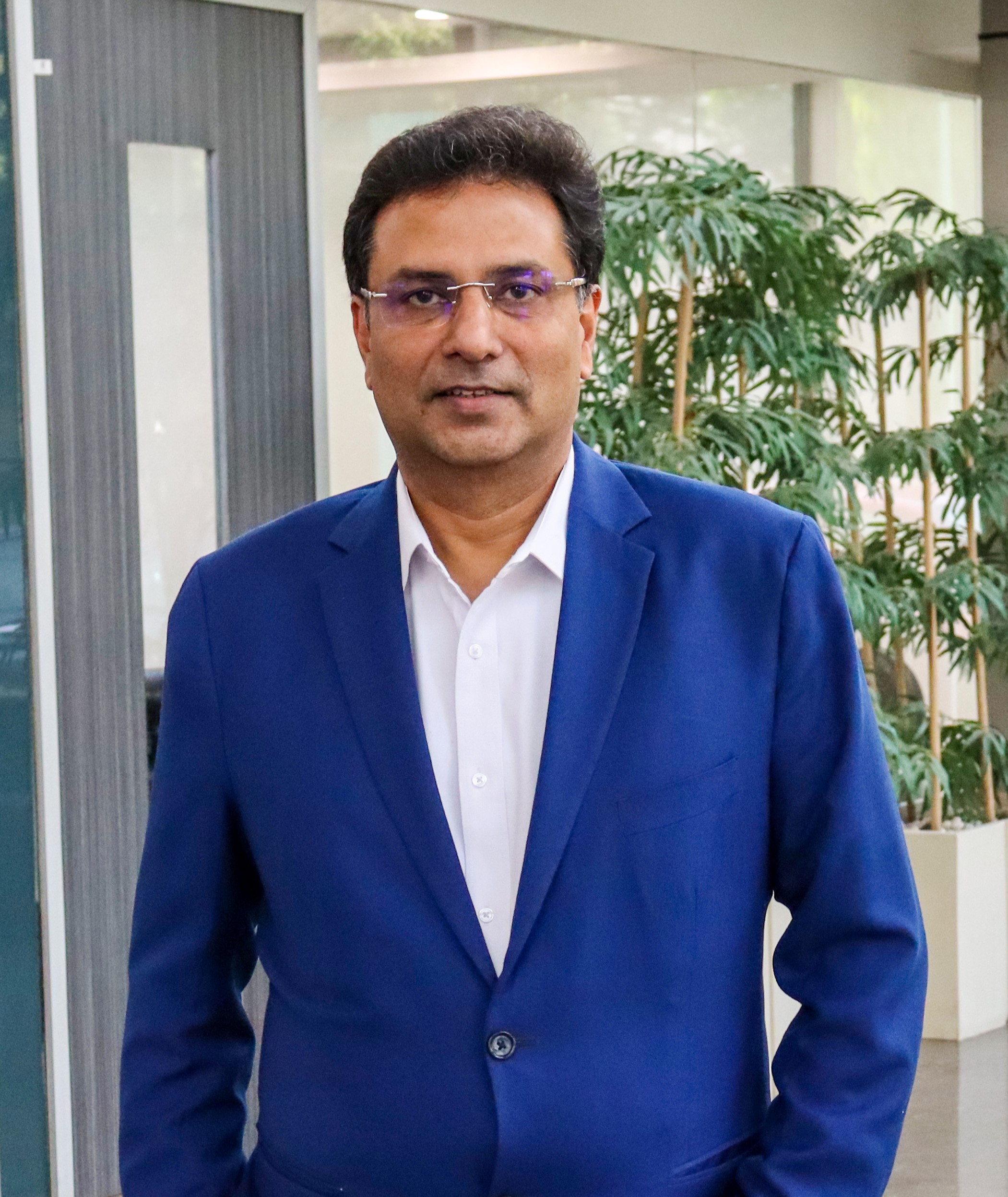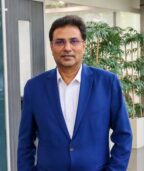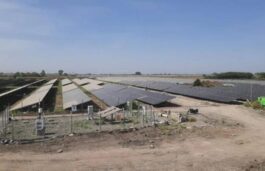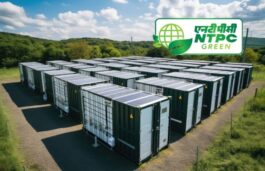Highlights :
A diversified energy and infrastructure firm that delves into distributed energy, solar energy, EPC, hydrogen, hybrid and Battery Energy Storage solutions, the Jakson Group reported a revenue of Rs 3000 Cr for FY2022-23. Anurag Garg, CEO – Solar Module Business of Jakson Group, who is responsible for driving growth in the solar channel, institutional and rooftop business for the organization, was with Schneider Electric India as the Vice President – of Asia Pacific for Solar Business. He talks to Saur Energy about export plans and views on the domestic manufacturing industry.
 Anurag Garg, COO, Solar Business- Jakson
Anurag Garg, COO, Solar Business- Jakson Please tell us about the manufacturing capacity and expansion plans of Jakson.

Anurag Garg, CEO, Solar Module Business- Jakson Group
Presently, we have 580 MW module manufacturing capacity at our Greater Noida Plant in India. We were among the first Indian manufacturers to start with fully automatic (including auto bussing) module manufacturing facility and waterless technology NDC laser cutting machine in 2021-22. The line is fully operational with minimum human intervention, to produce world class solar panels.
Recently, Jakson Group and Jinchen Corp signed a contract to increase the company’s solar PV production capabilities in India, which will enhance our existing capacity to 1.1 GW by end of this year. Our goal is to raise production capacity to 3 GW yearly, within 2-3 years.
Tell us about your presence in international markets.
We are gradually expanding around the globe. We have already done a couple of projects in West Africa and have various projects plans lined up for the US, Middle East and CIS region.
Within a year, since we started manufacturing our Mono-Perc bifacial range of Helia Series Modules with all certifications (IEC/BIS & UL) in place, we are getting a lot of export enquiries for our Helia Series Modules ranging from 400 Wp to 600 Wp. Our multi-busbar modules are designed for use in residential, commercial, industrial and utility-scale installations. We would be starting exports for our modules in the coming months and now have a dedicated team working on same. This year, we are showcasing our modules at International Solar Exhibitions in Europe & US.
What are your projects in backward integration?
Historically, India has been largely importing raw materials, needed for the assembly of modules, but of late, with supportive policies and schemes by Government to be self-reliant, there has been some addition in local manufacturing of such raw materials, and within two to three years, we will have fully integrated manufacturing lines in India in several GW to not only cater to domestic solar requirements, but also export from India. Besides, the Government has also introduced differential duties to promote local manufacturing, which has helped India almost double module manufacturing capacities within a year. We also have plans to look into backward integration and make India self-reliant by reducing our dependency on imports, and setting up manufacturing of such raw materials in India.
Jakson has specifically been giving a push to Green Hydrogen, how do you see the industry moving ahead? How do you see its price dynamics evolving?
The green hydrogen industry is moving very progressively. It is because the possible uses for hydrogen are expanding across multiple sectors, including power generation, manufacturing processes in industries such as steelmaking and cement production, fuel cells for electric vehicles, heavy transport such as shipping, green ammonia production for fertilizers, cleaning products, refrigeration, and electricity grid stabilization.
Regarding price dynamics, it will go down significantly with more scalability and innovative technologies in place. Furthermore, flexibility in the hydrogen demand can reduce the cost by more than 30%.
How do you view the domestic manufacturing industry and how self-reliant is it, including Jakson?
Although domestic manufacturing capacity has increased, the sector is still dependent on foreign equipment and raw materials imports. The industry’s ability to compete on price and maintain a reliable supply chain may be impacted by this reliance. As an industry, we are improving in terms of domestic manufacturing through policies like Production Linked Incentives (PLI) in place, which is expected to add huge capacities within few years locally.
How do you view the recent series of updates in the ALMM and its impact on the industry?
ALMM has been a great growth driver for local manufacturing and several GW of manufacturing was set up in India as a result.
ALMM triggered a surge in domestic manufacturing and a downturn in solar imports.
Recently government extended relief to solar project developers, especially for utility scale projects getting connected to grid, by allowing non-ALMM modules for a year for such projects, as it was felt that ALMM approved manufacturing capacity, especially modules manufactured using high efficiency Mono Perc cells was not enough to meet the installations planned for the year.
While this was not good news for local manufacturing industry, as it does not indicate policy stability, and has its own downturn, hope it helps growth of solar installations in this year and is only a temporary measure, while India ramps up its manufacturing further.
Please take us through the tech and key trends in the PV manufacturing industry.
The production of solar cells and modules with higher efficiencies and cheaper costs is now possible because of major technological breakthroughs in the photovoltaic (PV) manufacturing sector in recent years. The industry’s major trends include the expanding use of automation and robotics in manufacturing procedures, with higher efficiency cells being introduced (From Poly-P Type-N Type) and new module materials and designs, as well as use of environmentally friendly manufacturing techniques.
What are some new and emerging technologies that Jakson Group is using and planning to use in the future?
As technology revolutionizes solar energy, Jakson is ahead of the curve in adopting every new technology to increase its production capacity and efficiency. For reference, we were the first Indian manufacturer of a 600 Wp module.
Now, we are setting up a fully automated 600 MW state-of-the-art line which will be suitable for the latest N-type technology and help us deliver this technology to our customers.



























